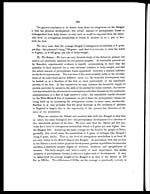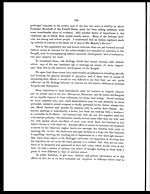Medicine - Institutions > Army health reports and medical documents > Scientific memoirs by officers of the Medical and Sanitary Departments of the Government of India > Number 37 - Investigations on Bengal jail dietaries > Part II > Relationship of food to physical development
(217) Page 207
Download files
Individual page:
Thumbnail gallery: Grid view | List view

207
be accounted for by the greater muscular development—the framework, etc., in
the two people being, to all intents and purposes, the same.
When we come to an examination of the hill tribes it will be seen that the
characteristics mentioned above, the beginnings, as it were, of which are to be
found in the Behari, are exceedingly prominent in the people around Darjeeling.
They are so much in evidence that, if there were no other differences, they would
form an outstanding feature of demarcation between the Bengali and tribes living
on a highly assimilable protein diet. In the hill people there are no signs
of the slackness, want of vigour, tonelessness, general slowness of reaction, and
other physiological attributes difficult to describe, detect and measure, which, to
those who have lived amongst the people of Bengal, form some of the distin-
guishing characteristics of the ordinary working population. Self-absorption
and want of interest in the incidents of every-day life, little power of attention,
observation or concentration of thought—these are some of the attributes of
all but the better classes and better-fed of the Bengalis.1The Behari does not
show these characteristics to anything like the same extent, and for these and other
reasons we may place him on a scale superior to the Bengali but inferior to hill
men. We consider it will be readily admitted by those who have lived amongst
both races that the Behari is, on the average, by fully 20 per cent. a more
capable individual than the average Bengali of the same class.
Now the question arises: Are there any other factors except differences in
diet that will satisfactorily account for this higher level of physical development
and general well-being? We believe that the presence of wheat as a component
part of the diet sufficiently explains the situation; however, we shall examine some
of the objections that have been brought against the view that defective nutrition
results from a low protein intake.
Dr. J. H. Kellogg, perhaps one of the strongest vegetarian advocates in the
United States, favoured us, through. Professor Benedict, with the following criticism
of our finding, regarding the important rôle played by diet, and especially protein,
in the nutrition of the Bengali, published in the memoir already referred to :-
"The weakest part of the report from my stand point is the remarks which
the investigator makes in relation to the defective nutrition resulting from the low
protein dietary. I do not think it is at all fair to attribute the lack of endurance
often seen among the Indians to the low protein diet. There are so many factors
which certainly should be taken into consideration: among these are their sexual
excesses, the depressing effects of the very hot, damp climate in which they
live and which predisposes to lack of exercise, the injurious effects of excessive
1The inhabitants of Bengal who live close to the sea-coast and rivers are said to be much more muscular
and capable of performing much more work than those inland; fish forms a large part of the diet of the class
referred to.
Set display mode to: Large image | Zoom image | Transcription
Images and transcriptions on this page, including medium image downloads, may be used under the Creative Commons Attribution 4.0 International Licence unless otherwise stated. ![]()
| Permanent URL | https://digital.nls.uk/75033366 |
|---|




